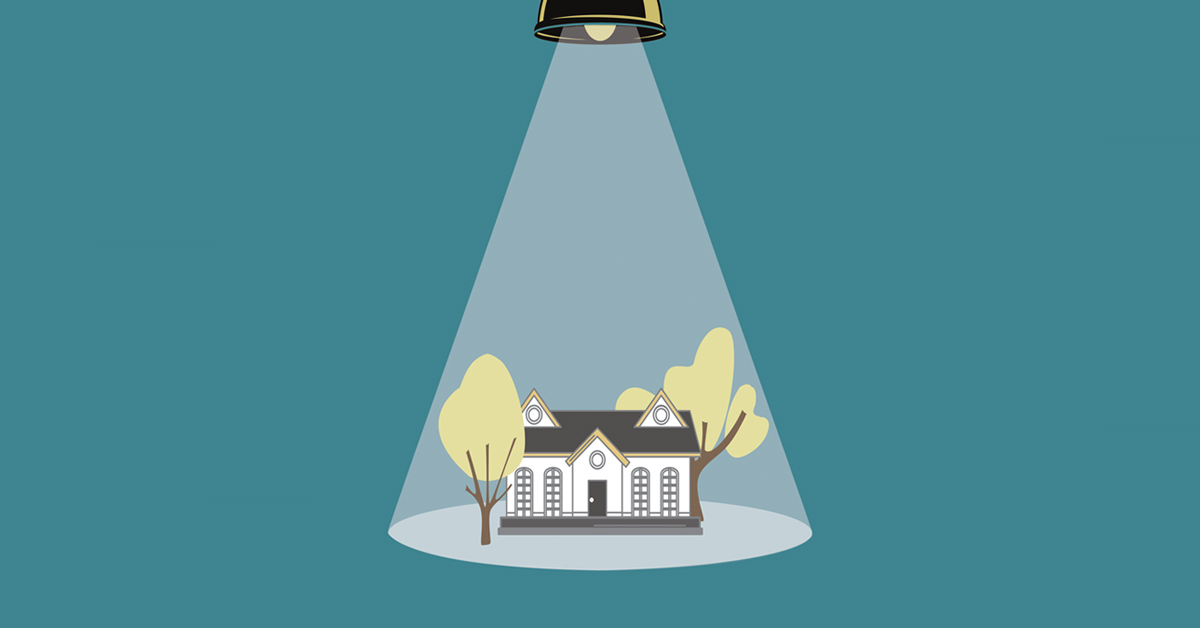When the COVID-19 pandemic struck last year, few expected the U.S. housing market to regain the strength it has seen in recent months. Home sales have rebounded vigorously and home prices are rising quickly in many markets. So, what is driving the extraordinary V-shaped recovery in housing and will it last?
To answer these questions, mortgage originators should first look at the underlying causes of the currently strong market. They can then try to judge whether the factors bolstering home sellers and the overall market are likely to continue to gain strength.
A V-shaped recovery is clearly visible as annualized existing-home sales dropped from more than 5 million to less than 4 million, then grew to nearly 7 million in the span of a few months last year, according to the National Association of Realtors (NAR). In turn, this pushed inventory to record lows, with only 2.5 months’ of supply of existing homes for sale in October 2020, down from a then-record low of 3.8 months’ supply a year earlier.
The severe shortage of homes for sale prevents sales from rising even higher, according to NAR chief economist Lawrence Yun. “If 20% more homes were on the market, we would have 20% more sales because demand is that high,” Yun said in August 2020.
Unexpected upswing
The market strength has been surprising given there are so many people suffering due to layoffs. So, what is going on here? High demand for housing is primarily caused by two factors.
First, the marginal trade-off between housing versus other uses of money has shifted strongly in favor of housing. With more people working at home, many want additional space for home offices, online education and exercise equipment, among other things. At the same time, other uses of money have largely been put on hold, including big weddings, live entertainment, cruises and international travel. You can almost hear couples saying, “If we can’t get married this year, why not buy a home with the money instead?”
Relative normalcy has reappeared in some areas of the economy. As of this past fall, however, air travel was down 65% from a year ago, the number of restaurant diners had declined by 40% and hotel occupancy was down 30%.
Second, the industry is experiencing record-low mortgage rates. With 30-year fixed-rate mortgages below 3%, the monthly payment on a $300,000 home (assuming a 10% downpayment) is about $1,600. That’s down from $1,700 in February 2020 when the average rate was 3.5%. Another way to think about today’s lower rates is that buying power has increased by 6% over the year, meaning a borrower can afford a $318,000 home instead of a $300,000 home while having the same monthly payment.
High demand and low mortgage rates are likely to stick around for some time. Even after the pandemic is over, more people will be allowed to work remotely. More importantly, there will be far more office workers splitting their work-week between their home and a traditional office. Once a vaccine is widely available, housing demand should remain higher than it was pre-pandemic. Furthermore, the Federal Reserve has given forward guidance that rates will remain low for an extended period of time. It has been buying mortgage-backed securities with the goal of driving down rates.
Solid foundation
It’s not that this time is different from the previous economic downturn. It’s that last time was really different. Five fundamental factors are most important for supporting a strong housing market: supply, demand, underwriting, affordability and the regulatory environment.
These factors are all vastly different today than in 2007. In regard to supply, the housing industry was overbuilt prior to the Great Recession but severely underbuilt today. Buyers suffered from irrational exuberance then but now the market has cautious buyers. Underwriting is far superior now. Affordability is better. The housing market was loosely regulated then and tightly regulated today.
Let’s look at these key factors. Housing is currently in short supply from coast to coast due to historically low construction levels over the past decade. The Arch Mortgage Insurance economics team estimates the housing shortage to be between 1 million and 2 million units, compared to being overbuilt by roughly 1 million units in 2006.
The notion of a broad and persistent housing shortage is consistent with results from a Freddie Mac research paper, which last year estimated the total U.S. housing shortage at about 2.5 million units. The situation has been getting worse over time: Freddie Mac, Moody’s Analytics and the Urban Institute all estimate the shortfall has been growing by 300,000 to 350,000 units a year.
Buyers are more cautious. Gallup surveys that ask if this is a good time to buy a home indicate less enthusiasm in recent years compared to the housing bubble of the 2000s. Mortgage quality has been exceptionally high over the past 10 years, according to the Urban Institute’s Housing Credit Availability Index. The institute also quantified the striking difference between current mortgage credit standards and the unusually loose mortgage credit standards of the early 2000s.
Nationally, affordability remains better than historic norms thanks to record-low interest rates. The share of income needed for monthly payments on a median-priced home is only 27% today compared to 41% in 2006 when mortgage rates were in the 6% range. These calculations are based on pre-tax median household income, a 10% down payment, annual escrow expenses (insurance and property taxes) of about 1.75% of the initial home price, and the prevailing 30-year fixed rate plus 0.75% to cover mortgage insurance and risk overlays. These figures are hypothetical since they are not based on the front-end debt-to-income levels of actual loans.
Shock absorption
The Dodd-Frank Act of 2010 fundamentally tightened both banking regulations and the mortgage underwriting process. For private-label securities, changes in the law and shrinking demand have ended the formerly strong market for low-quality loans.
For all of these reasons, the housing market is on a solid foundation. Since homeowner equity, or the absence thereof, is the predominant driver of default, this bodes well for mortgage default performance. Today’s strong fundamentals act as a giant shock absorber against any downside movements in home prices due to the current economic disturbance.
Strong demand is fueled by a shift in the marginal trade-off between housing versus other uses of money, and now favors housing and record-low mortgage rates. These factors can be expected to remain in place for a long time. In part, this is because the demand for housing should remain higher than it was pre-pandemic as some of the need for workspace moves from offices to residences.
Although it is impossible to know with certainty, both housing demand and home prices on a national level are likely to hold up well over the next year. What happens after that depends on many unknowns.
What is quite clear is that the U.S. entered 2020 with far stronger housing-market fundamentals than it did in 2007. Given these differences across multiple factors (supply, demand, underwriting quality, affordability and the regulatory environment), there is no reason to expect a repeat of the home-price declines seen more than a decade ago. ●
Author
-
Ralph DeFranco is global chief economist of the mortgage group at Arch Capital Services Inc., White Plains, N.Y. He leads the company’s efforts to forecast regional home prices and develop predictive economic models. He also is the author of The Housing and Mortgage Market Review, a quarterly report on the state of the nation’s housing sector, which includes probabilities of home-price declines from the Arch MI Risk Index.
View all posts







